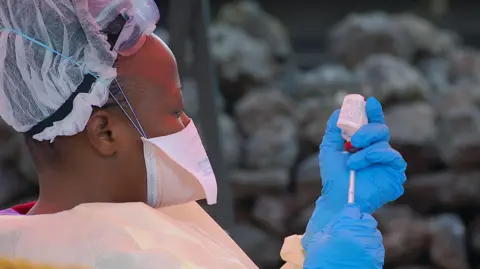China's Guangdong province is grappling with an alarming outbreak of chikungunya virus, with more than 7,000 cases reported since July, prompting officials to respond with urgent public health measures similar to those seen during the COVID-19 pandemic.
Foshan city has been especially hard hit, where patients diagnosed with chikungunya are required to stay in hospitals for treatment. They remain there until they either test negative for the virus or complete a week-long hospital stay, with their beds shielded by mosquito nets.
Chikungunya is transmitted through the bites of infected mosquitoes, leading to fever and severe joint pain, which can linger for years. Although uncommon in China, such outbreaks are prevalent in regions of South and Southeast Asia and parts of Africa. The current surge in cases extends beyond Foshan, with at least 12 other cities in the Guangdong province reporting infections. Nearly 3,000 of those cases emerged in just the last week.
On Monday, Hong Kong recorded its first case: a 12-year-old boy who developed symptoms after traveling to Foshan. The virus is not contagious from person to person but spreads through mosquito bites on individuals already infected. Fortunately, officials report that the cases documented so far have been mild, with approximately 95% of patients discharged within a week of hospitalization. However, the rarity of the virus in China has sparked anxiety among the population.
Comments on social media depict a mix of dread and confusion about the seriousness of the outbreak. A user on Weibo expressed concern, highlighting the potential long-lasting effects of the virus, while another raised doubts about the efficacy of quarantine measures, remarking on their similarity to those previously enforced during the pandemic.
In response to the crisis, health authorities in Guangdong vow to take "decisive and forceful measures.” They are encouraging residents to seek medical care if they exhibit symptoms such as fever, rashes, or joint pain. Additionally, they have mandated the removal of any stagnant water around homes, which serves as breeding grounds for mosquitoes. Failure to comply could result in fines reaching up to 10,000 yuan ($1,400).
Authorities are also deploying giant "elephant mosquitoes," which prey on smaller mosquitoes that transmit chikungunya, along with introducing mosquito-eating fish in local ponds. In a unique approach, drones are being utilized to locate areas of stagnant water. Some neighboring areas previously placed travel restrictions on persons coming from Foshan, but those mandates have since been lifted.
Chikungunya virus, first identified in Tanzania in 1952, is reported in over 110 countries today. Although no specific cure exists, severe complications are rare. Experts suggest that the most effective preventive measure against its spread is the elimination of stagnant water sources that allow mosquitoes to thrive.






















